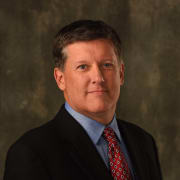One 'Elevated' Event in the Books, and So Far, So Good for the PGA Tour

More Weekly Read: Where's the LIV News and Buzz? | Fall Changes Afoot | Fore! Things
The PGA Tour’s new era of elevated events is off to an excellent start. With huge financial incentives, 17 of the top 20 players in the Official World Golf Ranking showed up on Maui for the first "designated" tournament—official terminology—at the Sentry Tournament of Champions. And Jon Rahm surprisingly overtook Collin Morikawa to post an impressive victory.
For those who remember a different time in golf, it was not always a given all of the top names would show up for what beginning in 2024 will be the kickoff event to the season. Tiger Woods and Phil Mickelson—when they were the top players in the game—used to routinely skip Kapalua. Heck, Rory McIlroy—the No. 1 player in the world—did this year.
But the purse was increased to $15 million from $8.2 million a year ago, those who made it to the Tour Championship—even without winning—were also invited, and the Tour’s new mandate to steer more money to the stars is underway.
This was the first of 13 events in which all of the players who are partaking in the Player Impact Program riches—23 this year who will be paid more than $100 million in bonuses—are required to play, with one opt-out allowed. That’s why McIlroy didn’t go to Maui.
But, in theory, he will be at the remaining 12 events (including the Players Championship), four major championships and three more events of his choosing. That’s 19 events total.
And it’s a far better batting average for the top players in the game at specific big tournaments than we've ever seen.
This, naturally, leads to concern that the "other" events will suffer.
There are 34 weeks in the schedule starting at the Sentry and ending at the Tour Championship. If you consider that a high majority of the top players will be at 17 of those weeks, that is a far better participation rate than we are used to seeing across a 44-week schedule with only the previous minimum of 15 events required.
But what about those 17 "other weeks?" Well, what many are forgetting is that the PIP players must choose other three events. And in the small print of the PIP requirements is a stipulation that one of them be agreed upon between the PGA Tour and the player.
You can already see some manipulating of schedules to get a few of the top names to spread themselves around.
While this week’s Sony Open in Hawaii is lacking in some star power—Jordan Spieth is the highest-ranked player in the field and there is nobody in the top 10—the upcoming American Express Championship and Farmers Insurance Open have already attracted several top 15 players, including Rahm and Scottie Scheffler.
"A lot of events aren’t going to change drastically," Justin Thomas said. "They may lose one or two people here or there. But I think it’s going to be a great opportunity for a lot of other storylines. Whether it’s through a rotation of different events or guys winning for the first time and jump-starting their career ... these non-elevated events are still PGA Tour events. They’re still going to have the same opportunities for guys to play their way into Augusta, play their way into the majors. It is unfortunate if (that is) the way they are perceived because they’re still great events."
Thomas is correct. There is still plenty of talent at this week’s Sony Open. And the FedEx Cup points offered to the winner are just 50 less than they were at the Sentry. So while the purse is different, the ability to qualify for the FedEx Cup playoffs or even the major championships is not diminished.
In fact, it might be easier. Some of these "other" fields will have fewer top players. It might provide an opportunity for someone else to win, or accumulate high finishes, and rack up a bunch of points.
And a top-75 player will still get in his share of designated events while also having a chance to make up ground in the "other" tournaments that will likely prove to be just as crucial as the end of the year draws near.
For now, there remain unknowns. Undoubtedly some unexpected twists will occur. What happens if a PIP guy doesn’t play 19 events? What happens if there are some "other" tournaments that are terribly impacted?
It all must play out.
But so far, the PGA Tour's foray into enhancing at least half of its tournaments and getting more of the top players together more often has the appearance of a success, with plenty to take place over the coming months.
